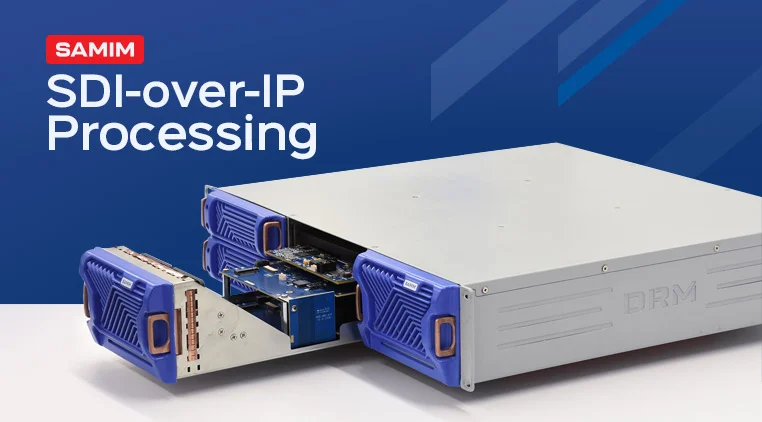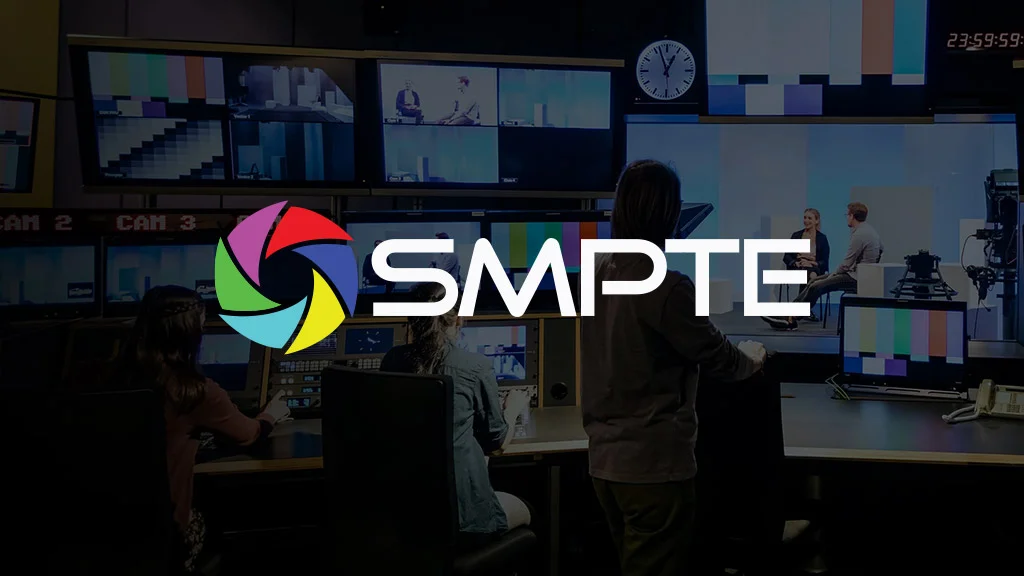
- Article
Understanding Serial Digital Interface (SDI) Video
Serial Digital Interface (SDI) is a professional standard for transmitting uncompressed digital video signals over coaxial cables. It is dominantly used in TV broadcast and production industry due to its reliability and high-quality transmission.
Versions of SDI Signals, Standards and Resolutions
There are established standards and regulations for various SDI signals defined by SMPTE (the Society of Motion Picture and Television Engineers), which is summarized in the following :
SMPTE 259M (1989): Known as SD-SDI, supports bitrates of 270, 360, 143, and 177 Mbit/s, handling formats like 480i and 576i.
SMPTE 344M (2000): ED-SDI with a bitrate of 540 Mbit/s, for 480p and 576p formats
SMPTE 292M (1998): HD-SDI, with 1485 and 1485/1.001 Mbit/s bitrates, supports 720p and 1080i.
SMPTE 372M (2002): Dual Link HD-SDI with bit rates of 2970 and 2970/1.001 Mbit/s, supporting 1080p60.
SMPTE 424M (2006): 3G-SDI, also offering 2970 and 2970/1.001 Mbit/s, supports 1080p60.
SMPTE ST 2081 (2015): 6G-SDI, with a bit rate of 6000 Mbit/s, supports 1080p120 and 2160p30.
SMPTE ST 2082 (2015): 12G-SDI offers 12000 Mbit/s, supporting 2160p60 resolution.
SMPTE ST 2083 (2020): 24G-SDI, with a bit rate of 24000 Mbit/s, supports 2160p120 and 4320p30.
The different current versions of serial digital interface (SDI) include SD / HD / 3G / 6G / 12G and also 24G, which reflect the industry’s increasing appetite for higher resolutions and enhanced frame rates. Each new version serves not merely as an upgrade but as a bridge, fostering integration of newer technologies with existing infrastructures.
The fact is that SDI remains an essential technology in the world of professional video. Understanding its specifications and uses can help professionals make informed decisions when setting up video broadcast and production systems.

Benefits of SDI signals
SDI broadcast signals offer several advantages that make them a preferred choice in professional video broadcasting and production environments. Here are some of the key benefits:
High-Quality Video Transmission
SDI transmits video in an uncompressed format, preserving the original quality without any loss or audio-visual degradation that can occur with compression.
Embedded Audio and Metadata: Streamlined Transmission with SDI
SDI can carry multiple audio channels along with video and metadata (e.g., timecode), reducing the number of cables needed and simplifying setups.
Standardization
As an established standard, SDI is widely supported across various devices and equipment in the broadcasting and production industry, ensuring compatibility and interoperability.
Robustness and Reliability
Serial digital interface ( SDI ) signals broadcast are less susceptible to electromagnetic interference (EMI) compared to analog signals, leading to more reliable transmission in challenging environments.
Versatility
With various versions (e.g., SD, HD, 3G, …), SDI signal supports a wide range of resolutions and frame rates, catering to different production needs.
Cost-Effective for Professional Use
Coaxial cables used for SDI transmission are relatively inexpensive and widely available, making it a cost-effective solution for professional setups.
Ease of Use: Quick Setup with SDI
The straightforward nature of SDI connections allows for quick and easy setup, making it user-friendly for technicians and operators.
Future-Proofing
As broadcast technology continues to evolve, newer SDI standards (like 12G-SDI) allow for higher resolutions and frame rates, helping to future-proof investments in equipment.
SDI broadcast signals provide numerous benefits that maintain the original quality, reliability, and efficiency of video transmission in professional settings.

Key Applications of the SDI Interface
Applications of the SDI Interface in Broadcasting
Live Television Production: SDI is the standard for connecting cameras, switchers, and other TV studio control room equipment , ensuring high-quality video delivery.
Studio Production: Used in television studios to connect cameras, monitors, and video servers, allowing seamless live feeds and recordings.
Applications of the SDI Interface in Post-Production
Video Editing: SDI video interfaces are commonly used in editing suites to transfer high-definition video from cameras and storage devices to editing software without quality loss. Color Grading: Professionals use SDI to connect grading monitors to color correction systems, ensuring accurate color representation.
Applications of the SDI Interface in Video Conferencing
Corporate and Educational Use: SDI video interfaces can connect professional cameras to video conferencing systems, improving video quality in remote meetings and presentations.
Read also :
Comparison of SDI and IP Broadcast Systems
Why SDI Technology Continues to Lead in Broadcasting?
The bit rate for SDI has steadily increased over time, progressing from 3G to 6G and then to 12G in rapid succession. The 12G version (SMPTE ST 2082) supports video formats of up to 2160p at 60Hz, enabling UHD signals to be transmitted through SDI systems. These advancements demonstrate that SDI technology has evolved alongside the developments in the broadcasting industry.
SDI technology continues to lead the way in broadcasting, offering high-quality transmission, reliability, standardization, and adaptability to new developments. Its foundational role ensures that SDI will remain a critical component of broadcasting technology for years to come.

Samim’s SDI Equipment: Reliability and resilience
In the competitive landscape of broadcasting technology, Samim Group has emerged as an important manufacturer of the SDI equipment. The company’s commitment to reliability and customer satisfaction is evident in the product offerings and support, which cater to the diverse needs of broadcasters worldwide.
Cutting-Edge Design: Samim integrates the latest technological advancements into its SDI equipment, ensuring compatibility with current broadcasting standards and formats, including 12G-SDI for 4K resolutions. 12G SDI over IP processor is one of the advanced products of Samim Group in the field of SDI equipment.
User-Friendly Interfaces: All the Samim’s products are designed with intuitive controls and user interfaces, making them easier for operators to manage complex broadcasting workflows efficiently.
Robust Build Quality: Samim’s SDI equipment is constructed to withstand the rigors of live broadcasting environments. Enhanced durability ensures longevity and consistent performance under demanding conditions.
Error Correction Features: Built-in error detection and correction mechanisms enhance the reliability of signal transmission, minimizing disruptions during live production.
Broadcasting and Production: Samim’s SDI equipment is suitable for various applications, from live sports broadcasting to studio productions, ensuring high-quality video transmission in any setting. We recommend to use Samim products in production control rooms.
Integration with current Systems and infrastructure: The equipment is designed for transparent integration with legacy systems, allowing broadcasters to upgrade their technology without significant infrastructure changes.
Adaptation to Emerging industry Trends: Samim Group is proactive in adapting its technology to emerging trends in broadcasting, such as IP integration and advanced video formats, ensuring that its equipment remains relevant in a rapidly evolving market.
Contact us right now
If you prefer to speak directly to our sales or support teams, do not hesitate to get in touch with us right now.
or, Let us contact you at a later time
If you prefer us to contact you as soon as possible and discuss your specific requirements, please fill out the following form.
"*" indicates required fields









